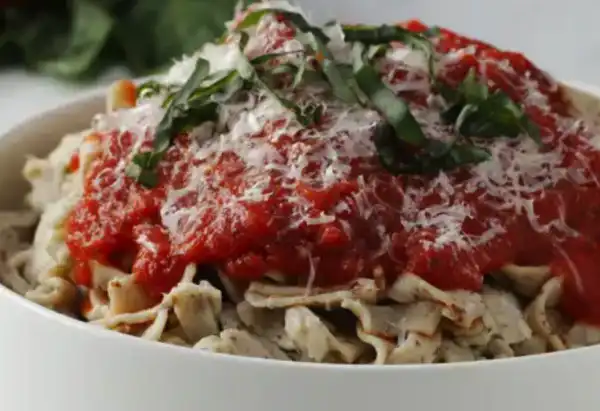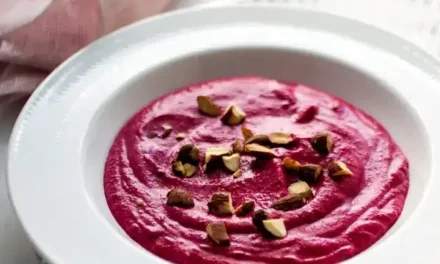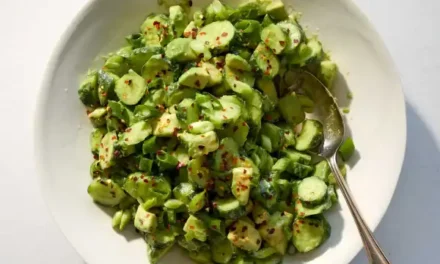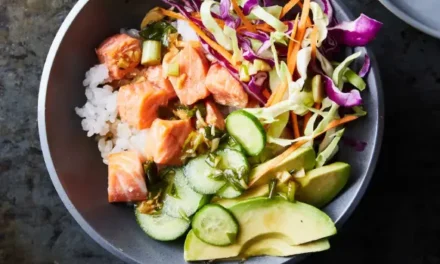Introduction
There’s nothing quite like homemade pasta, especially when it’s gluten-free and tailored to your dietary needs. For those of us who miss the taste and texture of traditional pasta, this Homemade Gluten-Free Pasta will bring you back to the comforting flavors of your favorite pasta dishes, without the gluten. Whether you’re gluten intolerant, have celiac disease, or simply prefer gluten-free alternatives, this pasta is a game-changer. It’s light, yet hearty, with a slightly chewy texture that holds up beautifully under rich sauces or in lighter dishes like pasta salads.
One of the great things about making your own gluten-free pasta is that you get full control over the ingredients. No more worrying about cross-contamination or hidden additives. This recipe is also incredibly versatile, allowing you to shape it into any pasta form you desire—fettuccine, tagliatelle, or even ravioli. Plus, it’s made with simple, pantry-friendly ingredients that you can easily find at your local grocery store.
The star ingredient here is a gluten-free flour blend, which forms the base of our pasta dough. Combined with eggs, olive oil, and a pinch of salt, these ingredients come together to create a smooth and pliable dough that’s easy to work with. This recipe is perfect for a weekend cooking project, and the end result is a deliciously satisfying pasta that you can pair with your favorite sauces—whether it’s a rich marinara, a creamy Alfredo, or a simple olive oil and garlic dressing.
Ingredients
For the Gluten-Free Pasta Dough:
- 2 cups gluten-free all-purpose flour blend (make sure it contains xanthan gum or add 1 teaspoon if needed)
- 3 large eggs
- 1 tablespoon olive oil
- 1/2 teaspoon salt
- 1-2 tablespoons water (as needed)
Substitutions and Tips:
- Egg-Free Version: If you’re looking for an egg-free alternative, you can use a flaxseed mixture (1 tablespoon ground flaxseed mixed with 3 tablespoons water for each egg) to bind the dough.
- Flour Options: A blend with rice flour, potato starch, and tapioca flour works best for gluten-free pasta, but you can experiment with other gluten-free flour mixes.
- Olive Oil: You can substitute olive oil with another neutral oil like avocado oil if preferred.
Step-by-Step Instructions
1. Prepare the Dough
Start by placing the gluten-free flour and salt in a large mixing bowl. Create a well in the center of the flour and crack in the eggs. Add the olive oil to the eggs and whisk them together with a fork, gradually incorporating the flour from the sides of the well. Continue mixing until a shaggy dough begins to form.
2. Knead the Dough
Once the mixture starts coming together, transfer the dough onto a lightly floured surface. Knead the dough for about 5-7 minutes, adding a tablespoon of water at a time if the dough feels too dry. The goal is to create a smooth, pliable dough that’s not too sticky. If the dough is too wet, sprinkle in a bit more flour.
3. Rest the Dough
Form the dough into a ball, wrap it in plastic wrap or cover it with a clean kitchen towel, and let it rest for at least 30 minutes at room temperature. This allows the dough to relax and makes it easier to roll out.
4. Roll Out the Dough
After the dough has rested, divide it into smaller portions to make it easier to handle. Using a rolling pin or a pasta machine, roll out each portion into thin sheets. If using a pasta machine, start with the widest setting and gradually reduce the thickness with each pass through the machine until you reach your desired thickness.
5. Cut the Pasta
Once you’ve rolled out the dough, cut it into your desired pasta shape. For fettuccine or tagliatelle, simply fold the dough sheet over and slice it into thin strips. You can also use a pasta cutter or a sharp knife for precise cuts. For shapes like ravioli, use a ravioli cutter or press to form the pasta pockets.
6. Cook the Pasta
Bring a large pot of salted water to a boil. Add the gluten-free pasta and cook for 2-4 minutes, depending on the thickness of your pasta. Fresh pasta cooks much quicker than dried pasta, so keep a close eye on it to avoid overcooking. The pasta is done when it’s al dente—firm to the bite, but tender.
7. Drain and Serve
Once the pasta is cooked, drain it immediately and toss it with your favorite sauce. If you’re not serving the pasta right away, toss it with a little olive oil to prevent it from sticking together.
Tips for Success
Use Xanthan Gum for Structure:
If your gluten-free flour blend doesn’t contain xanthan gum, be sure to add it. Xanthan gum helps bind the dough and gives the pasta the elasticity it needs to hold its shape.
Avoid Over-Kneading:
While it’s important to knead the dough to create structure, over-kneading can cause the dough to become tough. Stop kneading once the dough is smooth and elastic.
Keep the Dough Covered:
While you’re working with the dough, keep any unused portions covered with a towel or plastic wrap to prevent them from drying out.
Cooking Time:
Because fresh gluten-free pasta cooks quickly, be sure to watch it closely. Overcooking can cause the gluten-free pasta to become mushy, so aim for al dente texture.
Recipe Variations
Herbed Pasta:
For a flavor boost, add fresh herbs like basil, parsley, or oregano to the dough. Finely chop the herbs and knead them into the dough before resting it.
Lemon Zest Pasta:
Add the zest of one lemon to the dough for a bright, citrusy flavor that pairs beautifully with seafood or light sauces.
Spinach Pasta:
For a colorful twist, blend a handful of fresh spinach leaves into the dough. You can either puree the spinach and add it to the egg mixture or finely chop the spinach and knead it into the dough.
Serving Suggestions
With Marinara Sauce:
Serve your homemade gluten-free pasta with a classic marinara sauce for a simple yet satisfying meal. Top with fresh basil and a sprinkle of Parmesan cheese.
With Alfredo Sauce:
For a rich and creamy dish, toss the pasta with a homemade Alfredo sauce made from butter, cream, and Parmesan cheese.
Pesto Pasta:
Toss the pasta with a vibrant basil pesto sauce for a fresh and herbaceous meal. Add toasted pine nuts and extra Parmesan for texture and flavor.
As a Pasta Salad:
Use the gluten-free pasta in a cold pasta salad. Toss it with olive oil, fresh veggies, and feta cheese for a light and refreshing summer dish.
Storage and Reheating Instructions
Storing Uncooked Pasta:
If you want to make the pasta ahead of time, you can store the uncooked pasta in the refrigerator for up to 2 days. Simply lay the pasta out on a baking sheet and cover it with plastic wrap to prevent it from drying out.
Freezing the Pasta:
For longer storage, freeze the uncooked pasta. Arrange the pasta in a single layer on a baking sheet and freeze it until solid. Once frozen, transfer the pasta to an airtight container or freezer bag. It will keep for up to 3 months.
Reheating Cooked Pasta:
If you have leftover cooked pasta, store it in an airtight container in the fridge for up to 3 days. To reheat, simply toss it in a skillet with a little olive oil or butter over medium heat until warmed through.
Nutrition Information (Per Serving)
- Calories: 320
- Total Fat: 8g
- Saturated Fat: 2g
- Carbohydrates: 52g
- Fiber: 4g
- Protein: 9g
- Sodium: 210mg
This Homemade Gluten-Free Pasta is a great source of carbohydrates and provides energy for your daily activities. It’s lower in protein than traditional pasta, but pairing it with a protein-rich sauce or topping can create a balanced meal. The olive oil adds healthy fats, while the gluten-free flour blend keeps the recipe free of gluten, making it suitable for those with gluten sensitivities.
Cost Estimation
Approximate Cost per Serving: $2.50
Making your own gluten-free pasta at home is not only satisfying but also more affordable than buying pre-made gluten-free pasta from the store. Flour blends and eggs are relatively inexpensive, and you can make a large batch of pasta for a fraction of the cost.
If you enjoyed this recipe, check out our Gluten-Free Potato and Sorrel Gratin!
For more tips on working with gluten-free dough, read this article on gluten-free flour blends.





